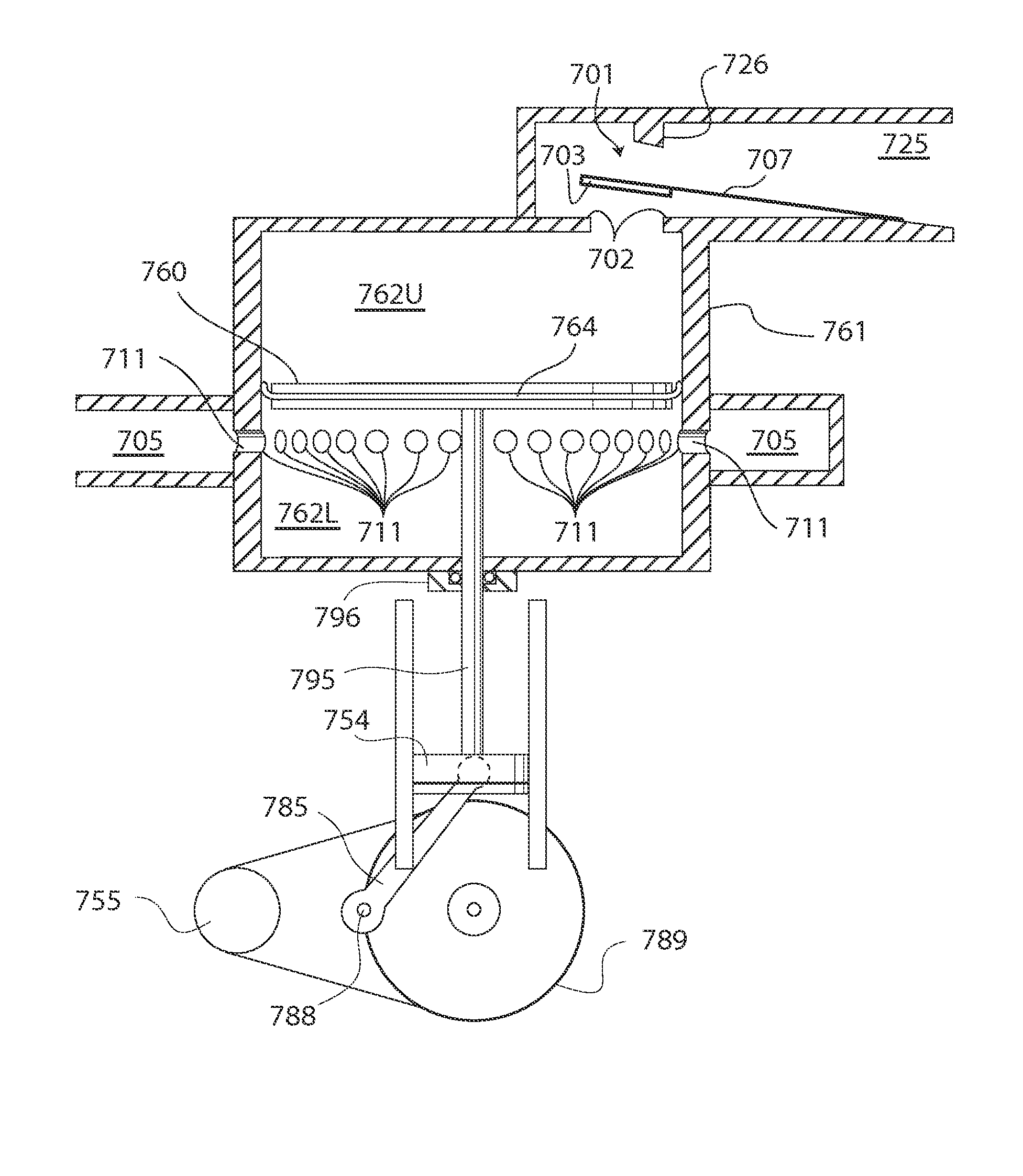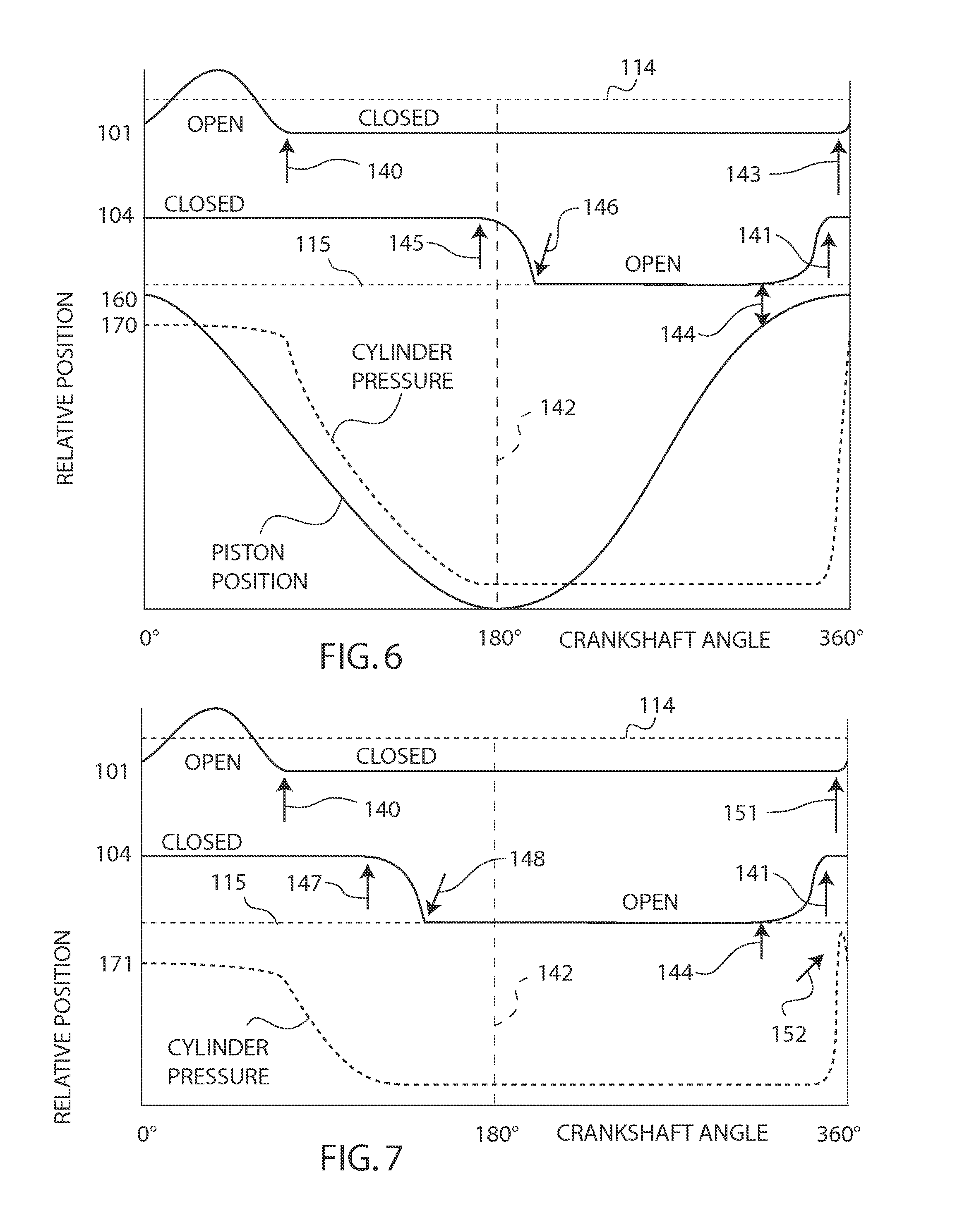Harmonic uniflow engine
- Summary
- Abstract
- Description
- Claims
- Application Information
AI Technical Summary
Benefits of technology
Problems solved by technology
Method used
Image
Examples
first example embodiment
[0049]Turning now to the drawings, FIGS. 1-5 show a first exemplary system of the engine of the present invention. In particular, FIG. 1 shows the harmonic engine in a static, non-operational state such as typically seen just prior to startup, and FIGS. 2-5 show the harmonic engine in various dynamic states of its two-stroke operation. The harmonic engine is shown comprising the following components and sub-assemblies. First a reciprocating-piston expander is shown comprising an expander cylinder 161 having an inlet and an outlet. The expander also includes a piston head 160 axially slidable in the expander cylinder and together enclosing an expansion chamber 162 accessible by the inlet and the outlet. Also the expander includes an intake header 125 in fluidic communication with the inlet for channeling working fluid from a pressurized fluid source into the expansion chamber, and an exhaust header 105 in fluidic communication with the outlet for channeling working fluid exhausted ou...
second example embodiment
Normal Operation of Second Example Embodiment
[0087]The operation of the second embodiment under nominal or lower pressure conditions is very much as described above for the first embodiment. The minimal volume of the expansion chamber at TDC, dictates that the amount of working fluid that must be admitted through the inlet valve to raise the pressure within the cylinder to that of the supply is minimal, and the pressure jump as the piston approaches TDC can be achieved in minimal time. This is advantageous for achieving higher efficiency and power.
High Pressure Overdrive Operation
[0088]The operation of the second embodiment under high supply pressure conditions changes significantly, and the contrast with nominal pressure operation is shown in FIG. 10. In this figure, the motion of inlet valve 401, outlet valve 404, piston 460 and cylinder pressure 472 are shown as a function of crankshaft angle. The motion of the inlet valve for a single cycle of free oscillation (neglecting aerody...
third example embodiment
Timing of Third Example Embodiment
[0100]A timing diagram for the wobble-piston embodiment is displayed in FIG. 14. Curves in this figure show the relative positions of the inlet valve, the outlet valve and the center of the top of the wobble-piston. The pressure 270 within expansion chamber 262 is also displayed as a function of the crankshaft angle. Starting at 0° in this cycle, the wobble piston motion is such that the phasing of the opening of inlet valve 201, shown by arrow 243, may be designed to coincide precisely with the TDC position of the wobble piston. In contrast to a purely axially moving piston, in which the instantaneous velocity of the piston vanishes at TDC, for the wobble-piston, the instantaneous velocity of the right hand side, bearing the inlet valve opening protrusion, does not vanish at TDC. This important distinction allows precise and reliable timing of the opening of the inlet valve. Then, in the initial portion of the inlet valve opening cycle, just after ...
PUM
 Login to View More
Login to View More Abstract
Description
Claims
Application Information
 Login to View More
Login to View More - R&D
- Intellectual Property
- Life Sciences
- Materials
- Tech Scout
- Unparalleled Data Quality
- Higher Quality Content
- 60% Fewer Hallucinations
Browse by: Latest US Patents, China's latest patents, Technical Efficacy Thesaurus, Application Domain, Technology Topic, Popular Technical Reports.
© 2025 PatSnap. All rights reserved.Legal|Privacy policy|Modern Slavery Act Transparency Statement|Sitemap|About US| Contact US: help@patsnap.com



